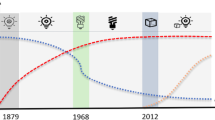Abstract
The biggest frontier of mechanization of the past 10 years has been the automation, broadly speaking, of interpretation. This includes recognition (for example, image recognition technologies used by security services), translation (Google Translate), searching for information (search engines), understanding (‘predictive algorithms’ that learn what books or movies you will like or what kind of propaganda will appeal to you, as used by Amazon, Netflix, or the Donald Trump campaign), trust (blockchain technologies such as Bitcoin), and negotiation (‘smart contracts’ as pioneered by firms such as Ethereum). This article explores how these technologies benefit business and why they have come to prominence now, the ways they degrade and exhaust the work of both humans and nonhumans, the parallels with earlier uses of machines to discipline and extract value from labour, and the implications for social movement strategy. The article also suggests some directions for research.
Similar content being viewed by others
References
Cadwalladr, Carole and Emma Graham-Harrison. 2018. Revealed: 50 million Facebook profiles harvested for Cambridge Analytica in major data breach. The Guardian. https://www.theguardian.com/news/2018/mar/17/cambridge-analytica-facebook-influence-us-election. Accessed 18 March 2018.
Caffentzis, George. 2013. In Letters of Blood and Fire: Work, Machines and the Crisis of Capitalism. Oakland: PM Press.
Castilla-Rubio, Juan Carlos. 2017. Nature-Inspired Design: How the Amazon can help us solve humanity’s greatest challenges. World Economic Forum. https://www.weforum.org/agenda/2017/06/bio-inspired-designamazon-technology/. Accessed 25 June 2019.
CNN Business. 2019. How 5G will Change the Future of Farming. https://edition.cnn.com/2019/04/01/business/5g-farming/index.html. Accessed 2 April 2019.
Collins, Harry, and Martin Kusch. 1999. The Shape of Actions: What Humans and Machines Can Do. Cambridge, MA: MIT Press.
Diedrich, Henning. 2016. Ethereum: Blockchains, Digital Assets, Smart Contracts, Decentralized Autonomous Organizations. Wroclaw: Wildfire Publishing.
Dowd, Kevin. 2014. Math Gone Mad: Regulatory risk modeling by the Federal Reserve. Policy Analysis 754: 1–62.
Gray, Mary L., and Siddharth Suri. 2019. Ghost Work: How to Stop Silicon Valley from Building a New Global Underclass. Boston: Houghton Mifflin Harcourt.
Hornborg, Alf. 2011. Global Ecology and Unequal Exchange: Fetishism in a Zero-Sum World. New York: Routledge.
Huber, Matthew. 2009. Energizing Historical Materialism: Fossil fuels, space and the capitalist mode of production. Geoforum 40 (1): 105–115.
Jezard, Adam. 2017. In 2020 Bitcoin Will Consume More Power than the World does Today. World Economic Forum. https://www.weforum.org/agenda/2017/12/bitcoin-consume-more-power-than-world-2020/. Accessed 15 Dec 2018.
Kobie, Nicole. 2019. The Complicated Truth about China’s Social Credit System. Wired. https://www.wired.co.uk/article/china-social-credit-system-explained. Accessed 7 June 2019.
Lohmann, Larry. 2018. Should We Put a Price on Carbon? That depends: who are “we”?. Presentation for the Panel “Should We Put a Price on Carbon?”, Sheffield University Festival of Debate. http://www.thecornerhouse.org.uk/sites/thecornerhouse.org.uk/files/SHOULD%20WE%20PUT%20A%20PRICE%20ON%20CARBON%20--%20THAT%20DEPENDS%20--%20WHO%20ARE%20WE_0.pdf. Accessed 11 May 2018.
Lohmann, Larry and Nicholas Hildyard. 2014. Energy, Work and Finance, Sturminster Newton: The Corner House, http://www.thecornerhouse.org.uk/sites/thecornerhouse.org.uk/files/EnergyWorkFinance%20%282.57MB%29.pdf. Accessed 19 August 2019.
Malm, Andreas. 2016. Fossil Capital: The Rise of Steam Power and the Roots of Global Warming. London: Verso.
Mies, Maria. 2014. Patriarchy and Accumulation on a World Scale: Women in the International Division of Labour. London: Zed Books.
Mora, Camilo, Randi Rollins, et al. 2018. Bitcoin Emissions Alone Could Push Global Warming above 2°C. Nature Climate Change 8: 931–933.
Nef, J.U. 1966. The Rise of the British Coal Industry. London: Routledge.
Qiu, Jack Linchuan. 2016. Goodbye iSlave: A Manifesto for Digital Abolition. Urbana: University of Illinois Press.
Ross, Andrew. 2013. In Search of the Lost Paycheck. In Digital Labour: The Internet as Playground and Factory, ed. Trebor Scholz, 24–51. New York: Routledge.
Singer, Natasha. 2019. Amazon is Pushing Facial Technology that a Study Says Could be Biased, New York Times. https://www.nytimes.com/2019/01/24/technology/amazon-facial-technology-study.html. Accessed 25 Jan 2019.
Supply Chain 24/7. 2018. New Digital Supply Chains are Powered by Artificial Intelligence and Predictive Analytics. https://247customsbroker.com/index.php/2018/12/18/new-digital-supply-chains-are-powered-byartificial-intelligence-and-predictive-analytics/. Accessed 17 Dec 2018.
Tapscott, Don, and Alex Tapscott. 2016. Blockchain Revolution: How the Technology behind Bitcoin is Changing Money, Business and the World. New York: Penguin.
The Economist. 2018. Sequencing the World. 23 January.
Author information
Authors and Affiliations
Corresponding author
Additional information
Publisher's Note
Springer Nature remains neutral with regard to jurisdictional claims in published maps and institutional affiliations.
Rights and permissions
About this article
Cite this article
Lohmann, L. Labour, Justice and the Mechanization of Interpretation. Development 62, 43–52 (2019). https://doi.org/10.1057/s41301-019-00207-2
Published:
Issue Date:
DOI: https://doi.org/10.1057/s41301-019-00207-2




